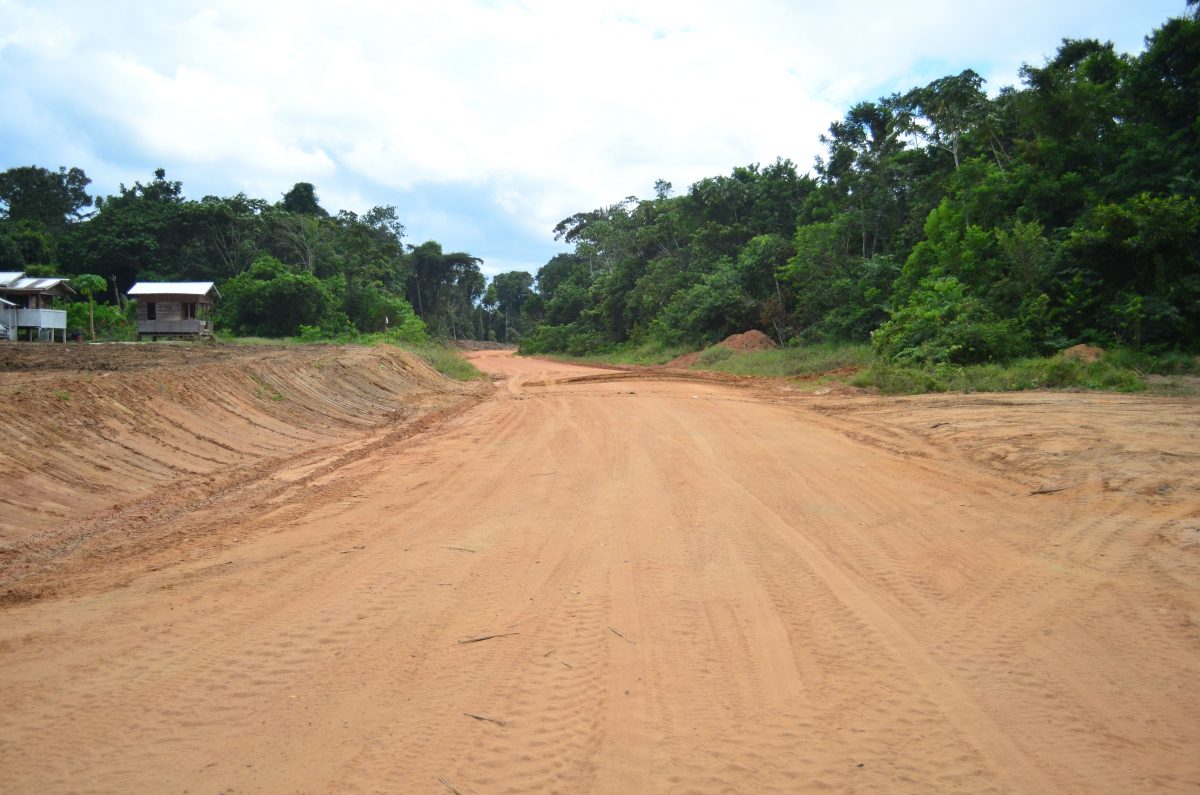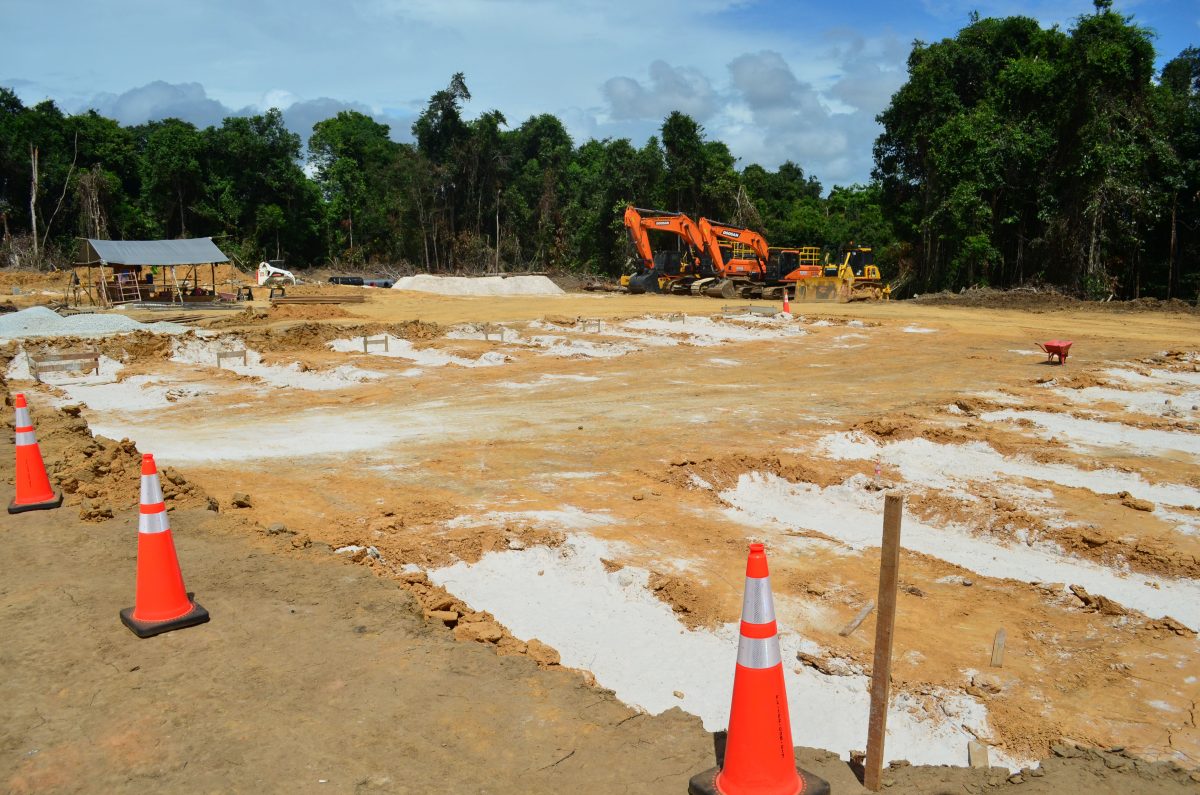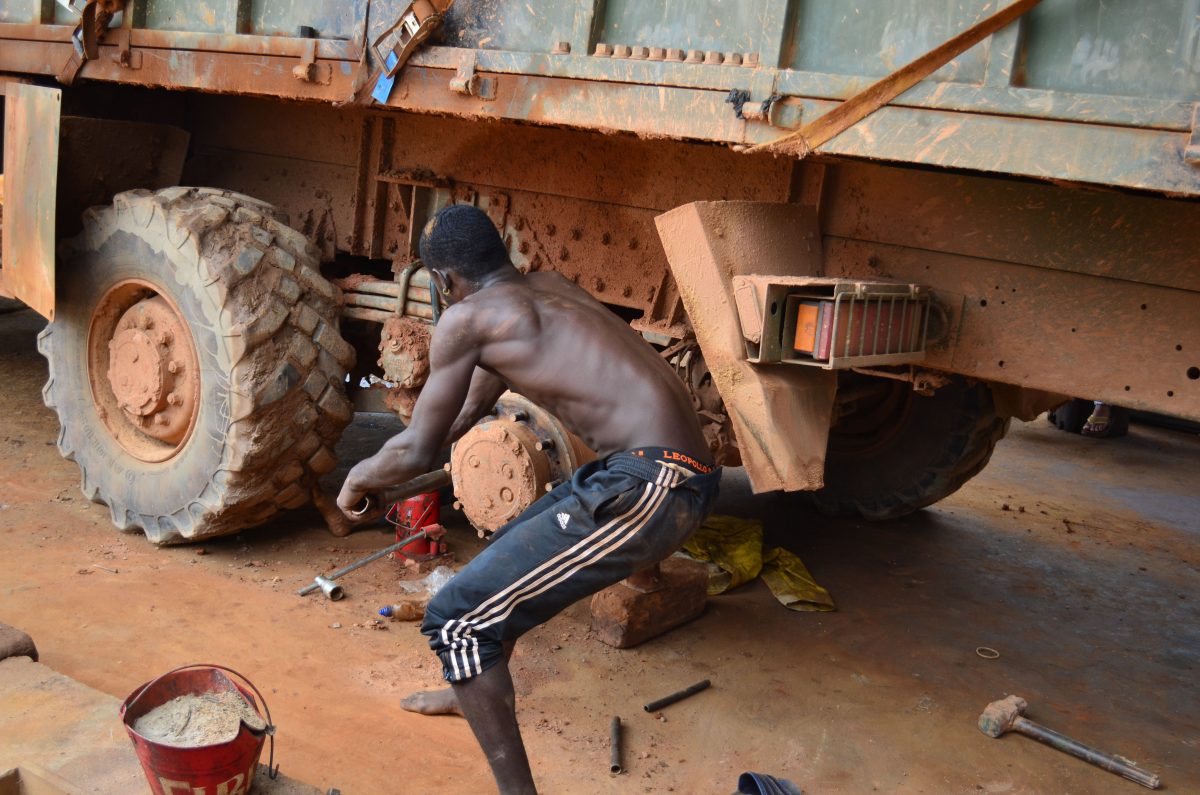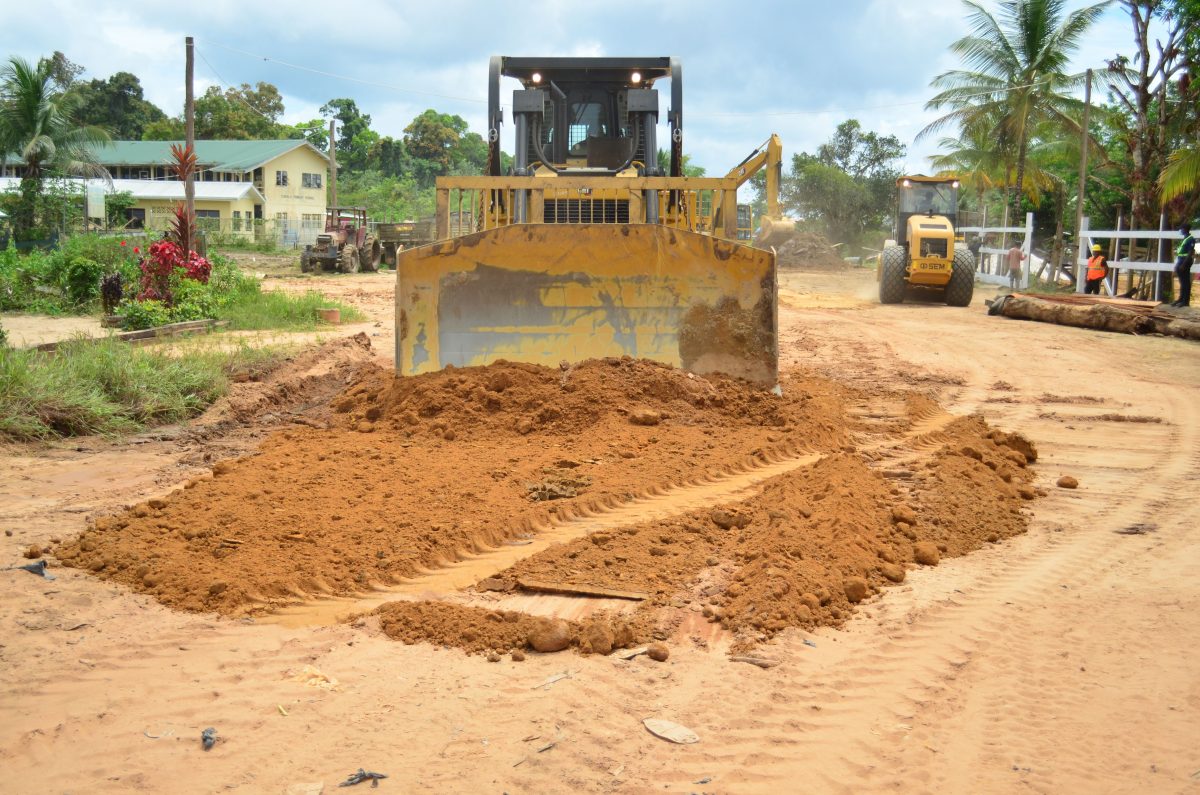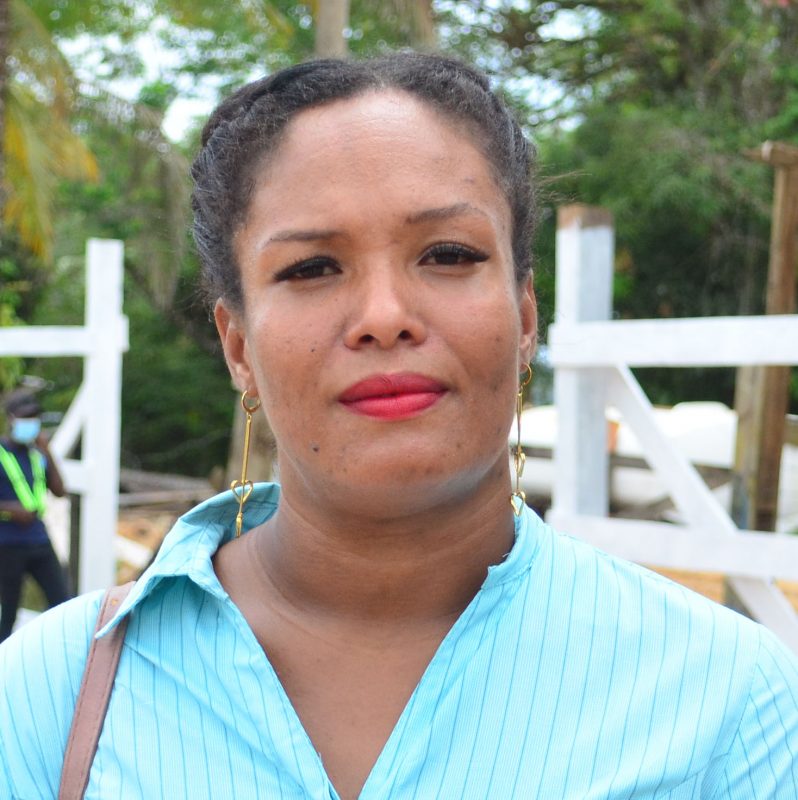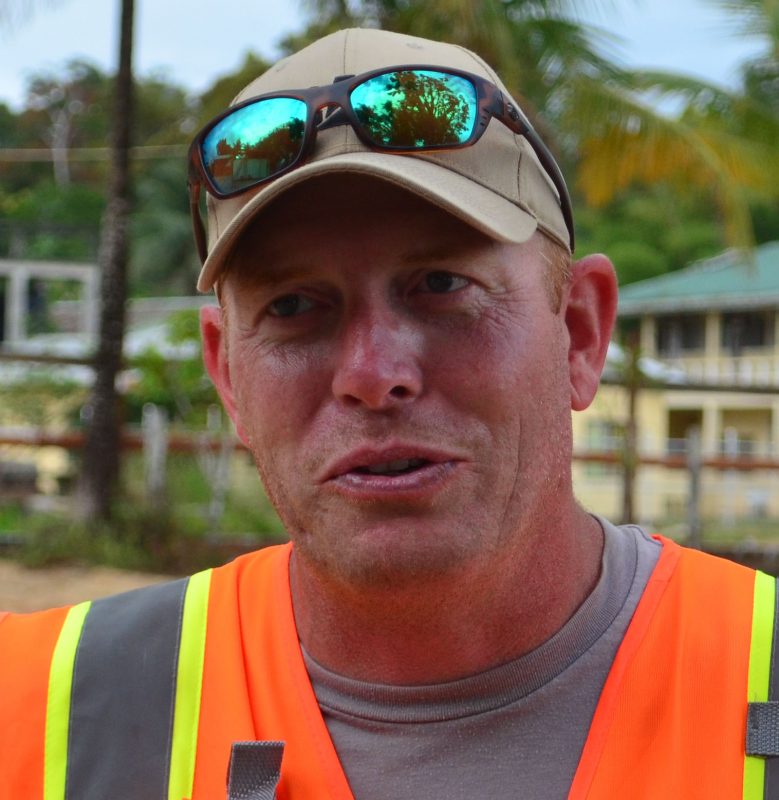In preparation for the massive construction works to be undertaken at its Toroparu mine site, Canadian gold mining company Gran Colombia Mining (GCM) has commenced works on the 235 kilo-metres of access road stretching from Itabali, Cuyuni-Mazaruni, in Region Seven.
“One of the big problems we have here is the condition of the road. That we are trying to fix. You have holes in the road, flooded roads and things like that. We are putting some effort into that right now. We will spend approximately 12 months to get it to a functional standard for us before starting to construct it to an all-weather road where we don’t have to worry about it,” Torben Michalsen, ETK’s construction manager told Sunday Stabroek.
It will take approximately four years to get the stretch of road to its desired state to allow the company to transport machinery when operations start.
Michalsen noted that the upgrading of the road represents the starting point of the planned massive investment in the region. Over the last four weeks, engineers attached to the company’s subsidiary here in Guyana – ETK Inc – have been super-vising the road rehabilitation works. To date, the first 20 kilometres of road have been completed, utilising the skills and services of locals from Itabali and Bartica.
The construction manager explained that they have been grading, compacting, and backfilling the road and potholes along the road and in the community of Itabali.
“It presently takes about four days to get Toroparu by road because of the present state. We are working to bring the road into a usable standard that will allow us to get the machinery all the way to Toroparu,” he explained.
Also part of the company’s plan to upgrade the road is the installation of culverts along the way and the replacement of bridges constructed from logs to ones fabricated with steel. He noted that they have already placed orders to the tune of some US$9 million for the necessary infrastructure.
According to Michalsen, by September they will be in a position to accelerate works along the road, which is used daily by miners and loggers. However, he explained that due to constraints brought on by the COVID-19 pandemic and supply chain challenges, the procured fleet of machinery has been delayed. Nevertheless, they have been working with locals using available machinery to begin rehabilitation works on the road.
‘You ever see water going into the cab of a truck?’
One positive result of this upgrade is the benefit it has brought to communities along the way.
For years, the road has been in a deplorable state despite rehabilitation works undertaken by central government. Miners, loggers, and fuel trans-porters utilising the roadway have complained bitterly over its state. At points such as Lion Mountain, Granny’s and Puruni, truckers complained of being stuck for lengthy periods due to the deplorable state of the road.
At Itabali, Michael (only name given), driver of a fuel truck, told this newspaper that the road is in dire need of repair. He noted that while he is happy rehabilitation work is being undertaken by ETK, there is a need for swift action to rehabilitate the deplorable sections before the rainy period commences.
“These people [ETK] are doing a good thing for us because everyone will benefit, but we don’t know how far they will be before the rain comes. The section of the road they do is good and solid but we need the government to step in and do something about that part of the road that is bad,” he stressed. He explained that due to the current state of the road, they are sometimes stuck for hours before they can winch their loaded fuel truck out of the slushy mud with the aid of an excavator.
The truck driver explained that during the course of last year, a section of the road was rehabilitated by RIMS Construction, however, when they asked for the other sections to be done, they were told that it was not a part of the contracted works.
“You ever see water going into the cab of a truck? That is what we go through because some holes are so deep the road covers the truck. One time we spent three days on the road waiting for help to get a truck out. It is not something easy and we need the government to come and see what is happening and give us some help,” the truck driver said as the other truckers in the fuel station in Itabali voiced their agreement.
According to Michael, due to the state of the road, they are sometimes forced to pay as much as $70,000 to use a private road to get to their destination and make their delivery.
“It is better we go that route because the damage to the vehicle is more. Look, we are repairing a truck right now. This is a new truck not two months old and the U-clamp already broken, that is $35,000. The road is in a terrible state,” the truck driver explained.
For residents of Bartica, the rehabilitation of the road is welcomed and much appreciated since it will allow easier access to transportation around the community and not end up in a cratered, dilapidated state during the rainy season.
Madonna Chung-Griffith, Vice Chairperson of the Community Development Counicl (CDC) said villagers are happy about the road upgrades. She pointed out that during the rainy period school children are unable to attend school without getting their uniforms dirty. “This road does have so much slush and is so muddy that you don’t want to go out. For the school children it is hard because they fall and so sometimes. I think it is good that they are upgrading the road and the community is getting to benefit,” she said.
Shop owner Oscar Daniels told Sunday Stabroek that the road has not been maintained as was expected. He stated that despite the traffic of heavy machinery transporting logs, machinery and fuel, regular maintenance is not evident. This, he said, has resulted in journeys being longer and somewhat frustrating. However, he believes that with the road upgrades by ETK, they will see more traffic between the camps and Itabali landing resulting in more commercial activities for the community.
He stated too that with good roads, persons can traverse regularly from their home in Itabali to their work site along the road and they can even have a public transportation system operating along the road.
“With a good road within 4-5 hours, you can be in Puruni. Many people can make a quick trip and be back here in a day. I really think what the company is doing will allow the community to benefit and create jobs for people with small vehicles.”
He explained that in the past persons used to provide transportation services to camps along the road but after the road became deplorable the service was halted.
Local talents
Michalsen disclosed that they are also engaged in works to construct a permanent campsite to house workers. He explained that once the campsite is completed, they would be able to hire more skilled and unskilled workers which will boost their local content policy and push to get the road works accelerated.
“We are looking to have labour from here in Itabali and Bartica, because these will be the communities most impacted by this road. We want to use the local talents we have here,” he noted.
At present, approximately 40 locals are employed with the company to aid in rehabilitation works on the roadway. And a contractor, Charles Construction from Bartica, has been hired to prepare and construct the necessary infrastructure at the campsite.
“Having worked on the Aurora Gold Mines project, I know the skills and talent are here but we are a bit constrained at the moment because we don’t have a campsite to accommodate a large group of workers or the security to watch over the machinery while we are away. Once the campsite is completed, we will be able to hire more people and even hire some more trucks to help with taking the road project further,” the construction manager, who is no stranger to Guyana’s interior roads, said.
Investments are pegged at US$165 million for 2022 in developmental works of its mines area in the Toroparu, Cuyuni/Mazaruni, as GCM prepares for its 2024 production schedule. The mining company which also has operations in Colombia, recently acquired the mining area from Sandspring Resources Inc, another Canadian company that was involved in exploratory activities here.
Dubbed one of the largest undeveloped gold deposits in the Americas, the new mining area is likely to be larger than Zijin Mining’s Aurora gold mine project and Troy Resources’ Karouni gold mine project.
GCM holds 100 per cent control of the Upper Puruni Concession area, which contains 53,283 hectares of mineral leases located in the Cuyuni-Mazaruni region.
Senior Minister in the Office of the President with responsibility for Finance, Dr Ashni Singh, in his January budget presentation announced that US$354 million will be invested by the company to develop the site for production over the next two years.
“Beyond this year, investment in the Toroparu area will finally result in long-anticipated development of a full-fledged gold mine since an international mid-tier gold company has confirmed their interest in this project,” he told the National Assembly. In addition to the sum being invested this year, a further US$189 million will be expended in 2023.
According to the company’s website, “The discovery of the structural control of high-grade gold mineralization at Toroparu has reaffirmed GCM’s confidence in the potential value of this project as one of our cornerstone assets.”
GCM had recently announced a discovery of a 4-kilometer strike length of high-grade structurally controlled gold mineralization. This was after a two-phase diamond drill programme comprising a total of 20,750 meters with 114 drill holes.
